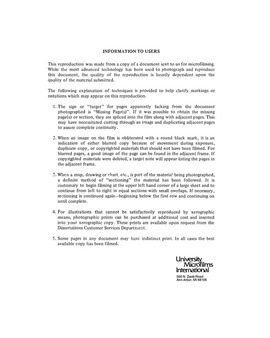| dc.contributor.author | Hwang, Been-kwei, | en_US |
| dc.date.accessioned | 2013-08-16T12:29:16Z | |
| dc.date.available | 2013-08-16T12:29:16Z | |
| dc.date.issued | 1984 | en_US |
| dc.identifier.uri | https://hdl.handle.net/11244/5286 | |
| dc.description.abstract | Various econometric models of Taiwan have been constructed since 1964. All of these shared the same common shortcomings. Their periods of annual data were too short to maintain a satisfactory degree of freedom. Their estimators were determined by the ordinary least squares method. The models were highly demand-oriented. The theoretical framework of the models and the effects of exports and imports on economic development were barely discussed. | en_US |
| dc.description.abstract | A disequilibrium model for Taiwan is also constructed for comparison in this study. This model confirms the results of the equilibrium model. Moreover, wage increases significantly reduce labor demand, but stimulate labor supply. The relationship between Taiwan's exports and the U.S. GNP is positive, but negative between the Taiwanese exports and the Japanese GNP. | en_US |
| dc.description.abstract | A new equilibrium model of the Taiwan economy is formulated in this study. The primary objective of this study is to analyze the economy of Taiwan and determine useful policy implications. Another purpose of this study is to eliminate the weaknesses of previous models. In particular the data have been made current in an attempt to enlarge the degree of freedom. In order to take care of the simultaneous bias, the 2SLS and 3SLS methods are applied in the estimation procedure. A dynamic simultaneous model is introduced in which the approaches of IS-LM, AS-AD, multiplier analysis, business cycle, and policy experiments are utilized to enrich the findings. | en_US |
| dc.description.abstract | The Taiwan equilibrium model is capable of predicting turning points and has a very good fit. It takes into account the important features of the economy of Taiwan. Exports are a major contributor to economic growth and employment. Monetary policy and/or fiscal policy actions cause inflation. Price stability is vulnerable to the price fluctuation of Taiwan's trading partners. Fiscal policy is more effective in Taiwan than monetary policy. Taiwan has a business cycle of about 16 years. The Okun's law and the Phillip's curve can be applied. | en_US |
| dc.format.extent | x, 134 leaves : | en_US |
| dc.subject | Business Administration, General. | en_US |
| dc.title | A dynamic simultaneous model of Taiwan : | en_US |
| dc.type | Thesis | en_US |
| dc.thesis.degree | Ph.D. | en_US |
| dc.thesis.degreeDiscipline | Michael F. Price College of Business | en_US |
| dc.note | Source: Dissertation Abstracts International, Volume: 45-08, Section: A, page: 2576. | en_US |
| ou.identifier | (UMI)AAI8425539 | en_US |
| ou.group | Michael F. Price College of Business | |
